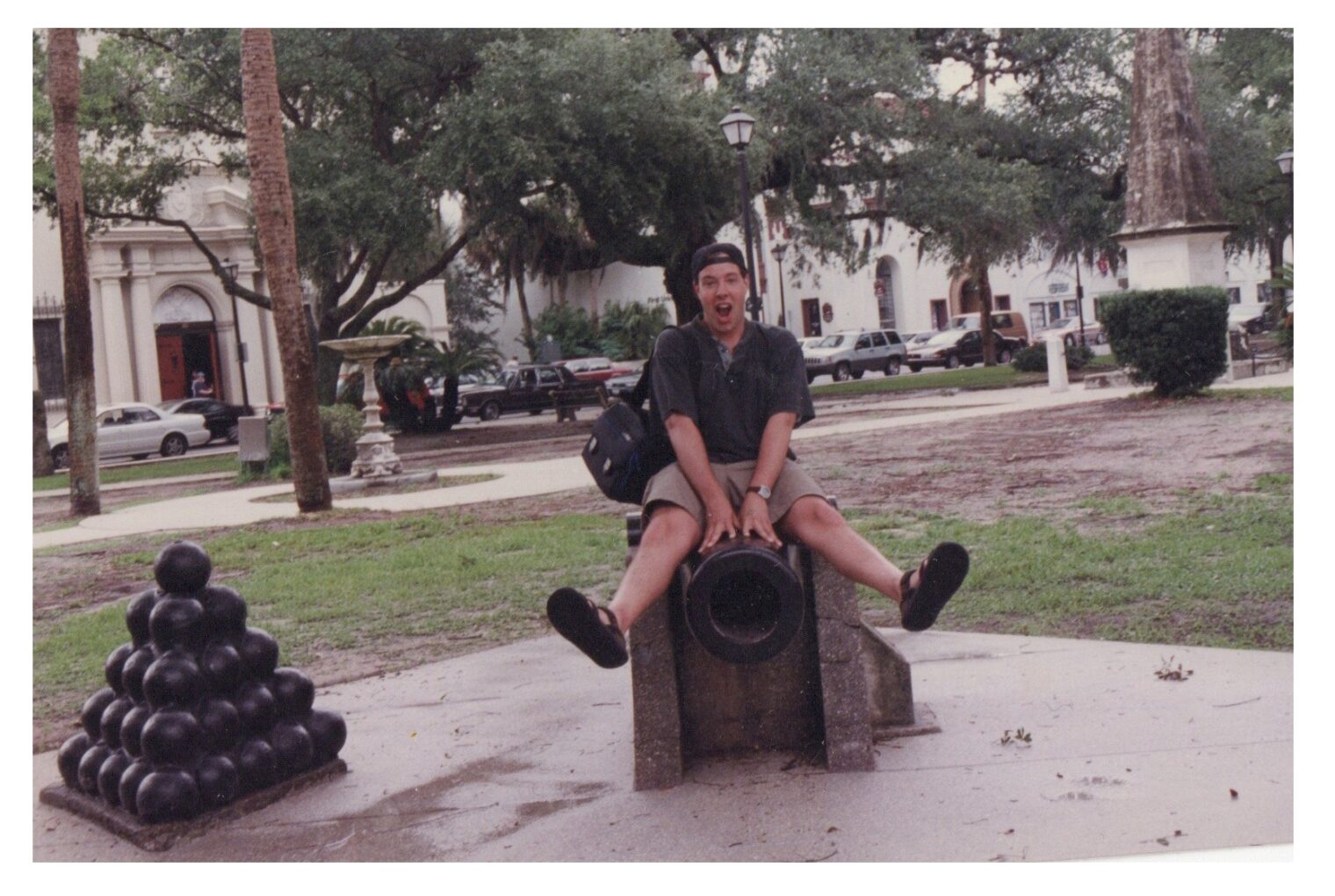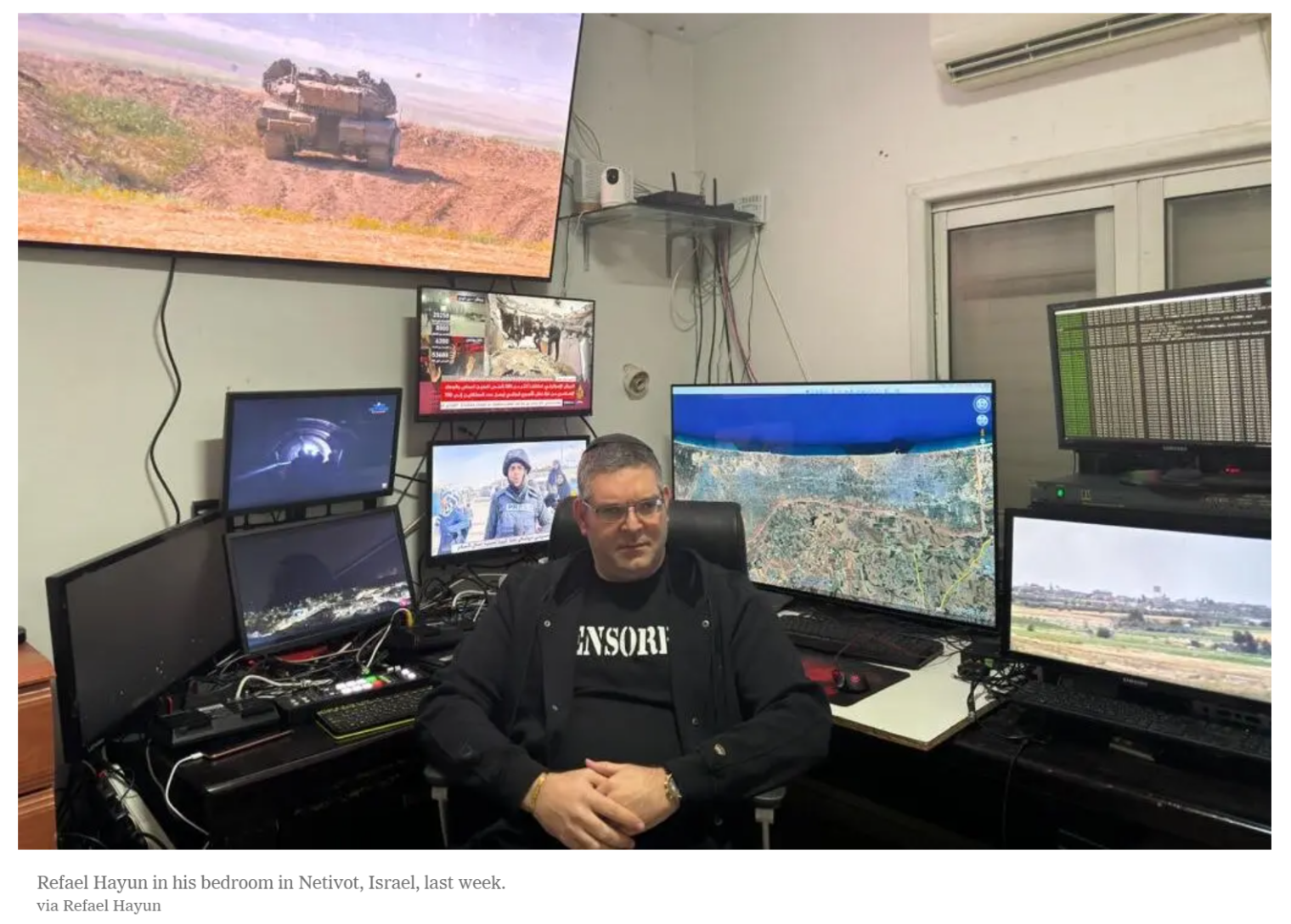As we say goodbye to 2023, let’s also say goodbye to a loyal reader of and commenter on this blog: Alex Kowalski (July 15, 1970-July 6, 2023).
If you think of yourself as just one in seven billion It can make you want to die
But if you think of yourself as an irreplaceable one of one
Doesn’t it stir just a little bit of courage?
— Tetsuya Miyamoto, creator of KenKen, quoted in The Puzzler
From my point of view, Alex was, indeed, an irreplaceable one of one. He read every chapter of Medical School 2020, starting long before, I think, that he had an inkling that he would become enmeshed in the health care system.
Some basics: Alex is survived by his parents, Dave and Karen of Holland, Massachusetts and younger brother Stephen. Alex and Stephen both worked with their father in a computer-organized printing and mailing business. If you would like to send a condolence card, their address is 122 Mashapaug Rd, Holland, MA 01521. (If you want to contribute to a memorial for Alex at the National Corvette Museum, email me (philg@mit.edu). A few readers have already committed $250 each.)
A tribute from someone in Union Township, New Jersey (source):
Alex is in the front row, second from left, in the blue jacket:
Alex was an outstanding student. He learned to program a computer at age 12 and achieved National Merit Scholar status in 1988. He attended the New Jersey Institute of Technology for two years, then transferred to Johns Hopkins, where his father had studied operations research and industrial engineering. (The first photo, above, is of Alex in 1993 at Hopkins.)
Evsey Domar, an MIT economics professor, cautioned undergraduates against falling in love, not because of the potential disaster that could befall a defendant in the U.S. family court system, but simply because the lover was giving far too much power to the loved and risked despair at the whim of the loved. Alex’s young adult life was, unfortunately, an example of Prof. Domar’s wisdom. Alex fell in love with a woman at Hopkins and followed her to Chicago where she would study for her Ph.D. in clinical psychology. She depended on Alex for financial and intellectual support until she had her degree in hand (7 years after they met), then discarded him when she realized that she was on track to earn more money than he was. Alex had a job assisting the dean of DePaul Law School where his voracious appetite for reading made him a valuable asset, but unfortunately his employer died and Alex decided to move to central Massachusetts to work with his father and brother.
Some of Alex’s last thoughts, expressed on Facebook:
I shall be meeting him soon I think. Sooner than I wanted. If I do, my close friends will know and we’ll know what to do I love you all. (July 2)
God what a horrible day. Inexpressible. Nothing but pain eveverywhere and pain killers are killing me. No more. Oxycodone, methadone, MORPHINE. Must STOP. (June 30)
come what may, I feel liberated to be done with the hospital care. I have been riding this hospital horse over increasingly rough ground as many as four times per week through rain, snow, summer heat, terrible traffic, at almost random hours, and as much as 200 miles round trip for a loooooong time now. I get up as early as 4:30 a.m and don’t get home until 2:00 a.m. some nights. I just can’t sustain that. … I am out of the hospital and in fact I am 100% done with my hospital care. Everyone agrees that there is nothing else they can do for me. … (June 23)
(I missed most of these as they were happening because we were on a whirlwind tour of the national parks and I wasn’t checking into social media (I had blog posts pre-scheduled).)
Based on Alex’s comments here, he was knowledgeable in at least the following domains:
- automobile racing (a fan of Ayrton Senna)
- automobile technology and repair, including mechanical and electrical, especially of the 2010 Ford Escape Hybrid and of a 1968 red Corvette, whose engine he rebuilt (this was the Corvette generation enjoyed by Apollo astronauts)
- motorcycles (he had three dirt bikes)
- watches (he became a passionate amateur watchmaker during his cancer struggles)
- baseball (“Japanese pro baseball is the only form of the game I can watch anymore. … American baseball – despite the fans roundly hating it – is being transformed … They want hitters who can smash the ball so hard the particles emit radiation…”)
- economics
- Arduino programing
- graphic arts and printing
- philosophy (quoting Kierkegaard: “Life can only be understood backwards; but it must be lived forwards.”)
- guns, especially rifles and the local rod and gun club
- laser printer cartridge reconditioning (“When I lived in Baltimore a long, long time ago, for about a year I ran a pretty good side-hustle business recharging HP toner cartridges for old LaserJets. Those cartridges were comparatively easy to disassemble, clean, and recharge with a new main “pull” seal and new toner. I used to wear an N95 mask and did the “blow out” and cleaning outside!”)
- music
- shaving history (“Barbasol was first formulated by a former MIT professor, Frank Shields”, on one of my Gillette v. Dorco shave-off posts)
Where did he stand on COVID-19 and coronapanic? He did not discount the possibility that the disease would be as bad as the Covidcrats said, but starting on March 15, 2020, he predicted that the purported cure (lockdowns and other coercing government measures) would be worse than the disease.
The elephants in the room are the number of people who are going to die because they run out of money, and the social unrest that is going to materialize within about a month of lockdowns and closures. … What are people going to do in the July heat when they have no money, no jobs to go to, and their kids to feed? I’ll tell you what they’re going to do: they’re going to go crazy.
It looks as though he predicted both the failure of Faucism and the mostly peaceful BLM protests. Also from March 15, 2020:
All the “blunt the peak” and social distancing theory is nice, but what it really means is that the epidemic is going to last months longer. Anyone who has ever run a business knows that you can’t just shut down for two months and then pop back into action. And in large cities and small, we’re going to have real public order and crime problems.
From April 21, 2020:
everyone under 30 is going to wish they were dead when they have to dig themselves out of the $20 trillion dollar hole this is going to blow in their future.
Reading between the lines, it looks as though Alex’s cancer detection was delayed by the shutdown of health care services in Massachusetts. In April 2020, he talked about “a family member” who needed a cancer screening test due to some concerning symptoms, but the test was pushed out until the summer of 2020. His parents confirmed that Alex was diagnosed before the governor-ordered shutdown of non-emergency medical care in Massachusetts and, therefore, his cancer treatment was delayed. Metastatic prostate cancer ultimately killed our loyal friend and reader.
I will miss Alex, the knowledge that he generously shared, and his thought-provoking perspective on many topics.
Readers: I hope that you’ll raise a glass to Alex’s memory tonight. I will.
If you want to make a donation in Alex’s name, here were some of his favorite charities:
The National Corvette Museum has bricks starting at $125 for members, $175 for non-members. Alex’s parents didn’t mention this museum as one of Alex’s favorite charities, but perhaps it would make sense to memorialize him at the home of one of America’s greatest engineering achievements. Alex was a huge patriot. (I’m in the middle of an email conversation with them and waiting for their engraver to return from vacation to find out what is doable; there is a 15-character limit per line that can occasionally be stretched to 16.)
Alex’s parents, sadly, were not serious family documentarians. They were able to share a few photos, however. Alex was an accomplished rollerblader and here he is in Cancún, Mexico with, I think, the girl who ultimately broke his heart:
Alex was blessed with a golden retriever named Einstein (after Doc’s dog in Back to the Future), adopted in 1985:
Karen: “Einstein was the love of all our lives. When Alex talked to him he shivered with excitement. Alex would give him commands do this or get that and Einstein would hang on every word it was so much fun to watch.”
Here’s Alex on vacation (Savannah, Georgia?) in 2003:
In the early 1980s, Alex went to Disney World with his family. Here he is playing “Chip Cruiser”, which Google says was an EPCOT game in which you’d shoot at “contaminants” in a communications network (i.e., computer viruses!).
Full post, including comments 































